CHEVROLET CAVALIER 1998 3.G Owner's Manual
Manufacturer: CHEVROLET, Model Year: 1998, Model line: CAVALIER, Model: CHEVROLET CAVALIER 1998 3.GPages: 400, PDF Size: 20.74 MB
Page 21 of 400
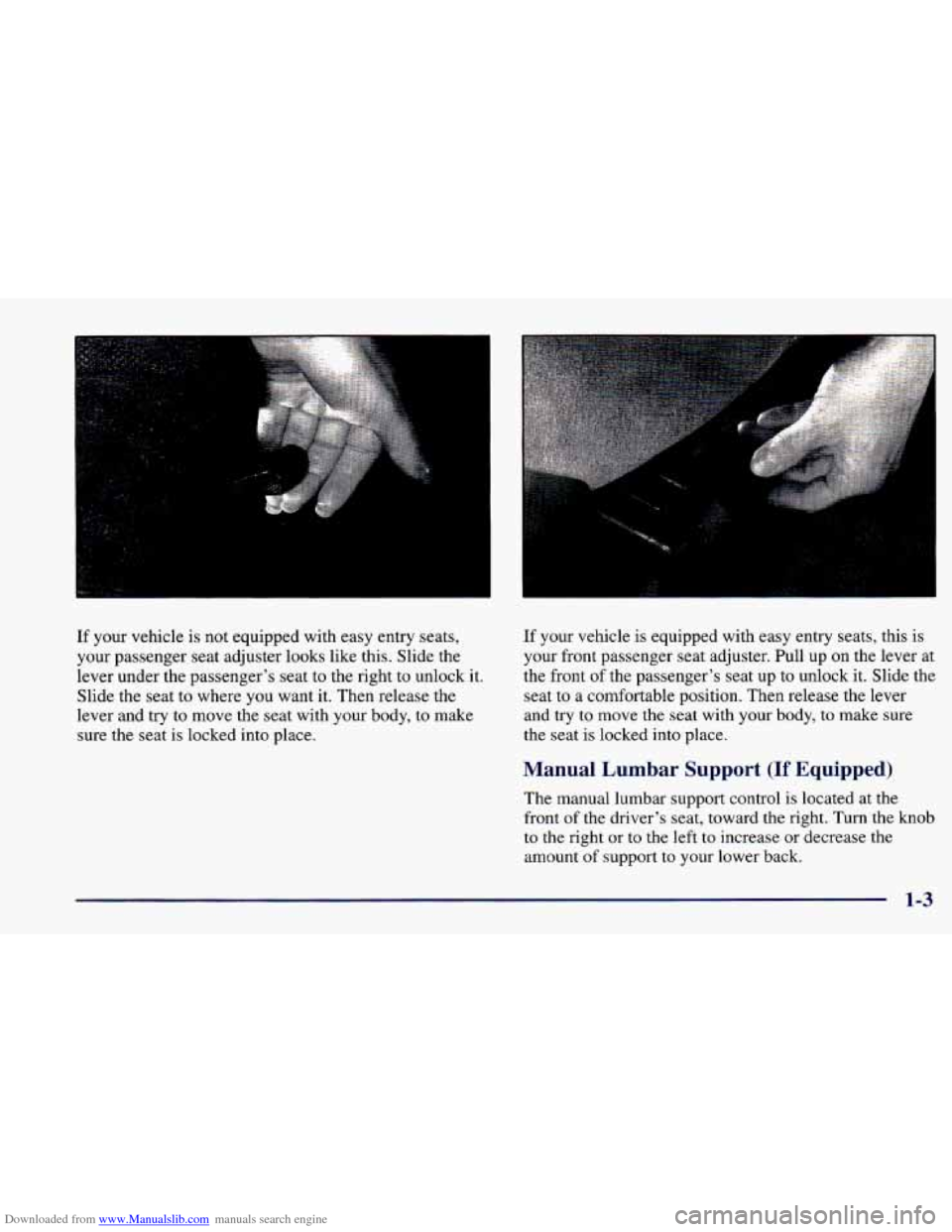
Downloaded from www.Manualslib.com manuals search engine 1
If your vehicle is not equipped with easy entry seats,
your passenger seat adjuster looks like this. Slide the
lever under the passenger's seat to the right to unlock it.
Slide the seat to where you want
it. Then release the
lever and try to move the seat with your body, to make
sure the seat is locked into place.
If your vehicle is equipped with easy entry seats, this is
your front passenger seat adjuster. Pull up on the lever at
the front
of the passenger's seat up to unlock it. Slide the
seat to a comfortable position. Then release the lever
and try to move the seat with your body, to make sure
the seat is locked into place.
Manual Lumbar Support (If Equipped)
The manual lumbar support control is located at the
front of the driver's seat, toward the right. Turn the knob
to the right or to the left to increase or decrease the
amount
of support to your lower back.
1-3
Page 22 of 400

Downloaded from www.Manualslib.com manuals search engine Reclining Front Seatbacks
To adjust the seatback, lift the lever on the outer side of
the seat and move the seatback to where you want it.
Release the lever and push rearward on the seatback to
make sure it
is locked. Pull up on the lever and the seat
will
go to an upright position.
c
But don’t have a seatback reclined if your vehicle
is moving.
1-4
Page 23 of 400
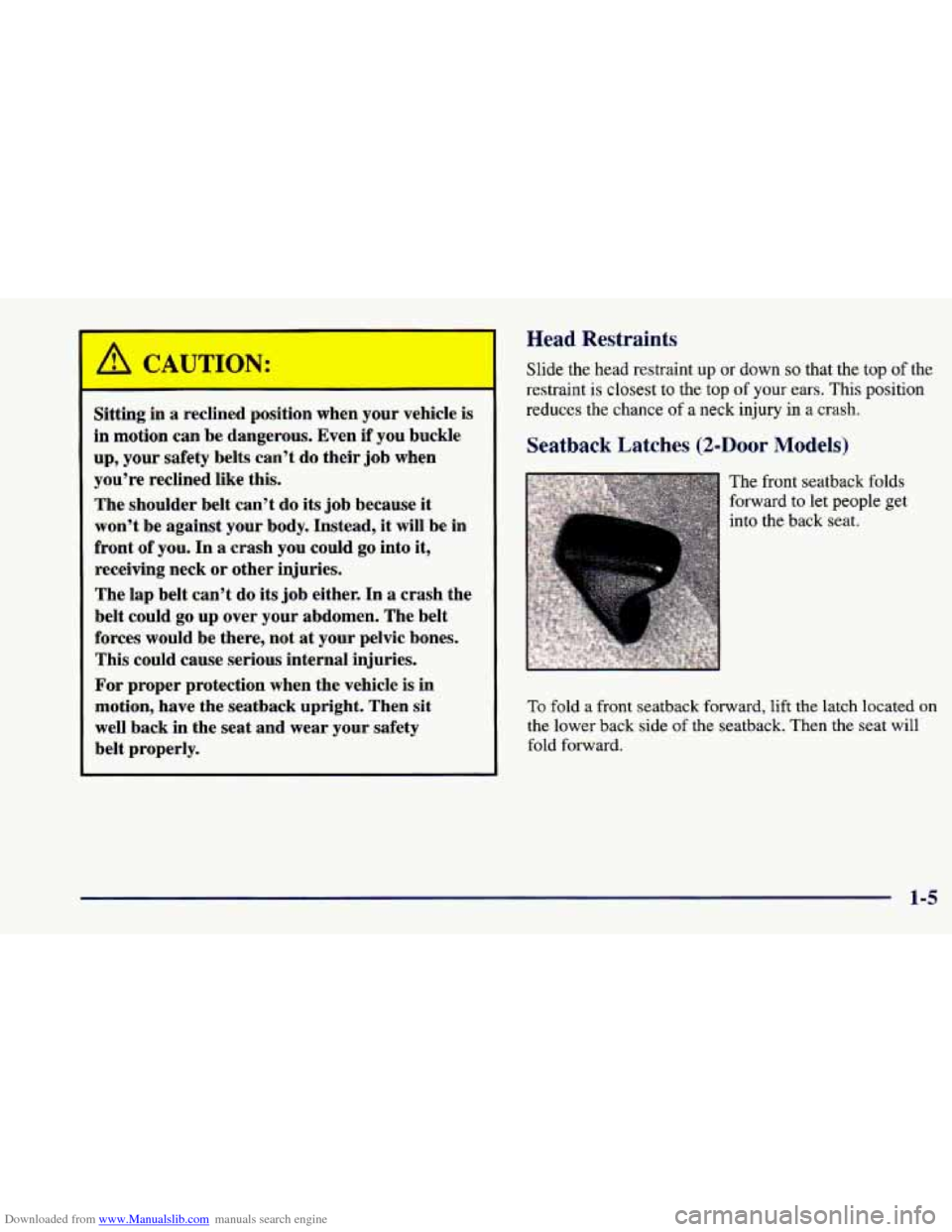
Downloaded from www.Manualslib.com manuals search engine Sitting in a reclined position when your vehicle is
in motion can be dangerous. Even if you buckle
up, your safety belts can’t do their job when
you’re reclined like this.
The shoulder belt can’t do
its job because it
won’t be against your body. Instead, it will be in
front
of you. In a crash you could go into it,
receiving neck or other injuries.
The lap belt can’t do
its job either. In a crash the
belt could
go up over your abdomen. The belt
forces would be there, not
at your pelvic bones.
This could cause serious internal injuries.
For proper protection when the vehicle is in
motion, have the seatback upright. Then sit
well back in the seat and wear your safety
belt properly.
Head Restraints
Slide the head restraint up or down so that the top of the
restraint is closest
to the top of your ears. This position
reduces the chance
of a neck injury in a crash.
Seatback Latches (2-Door Models)
The front seatback folds
forward
to let people get
into the back seat.
To fold
a front seatback forward, lift the latch located on
the lower back side of the seatback. Then the seat will
fold forward.
1-5
Page 24 of 400
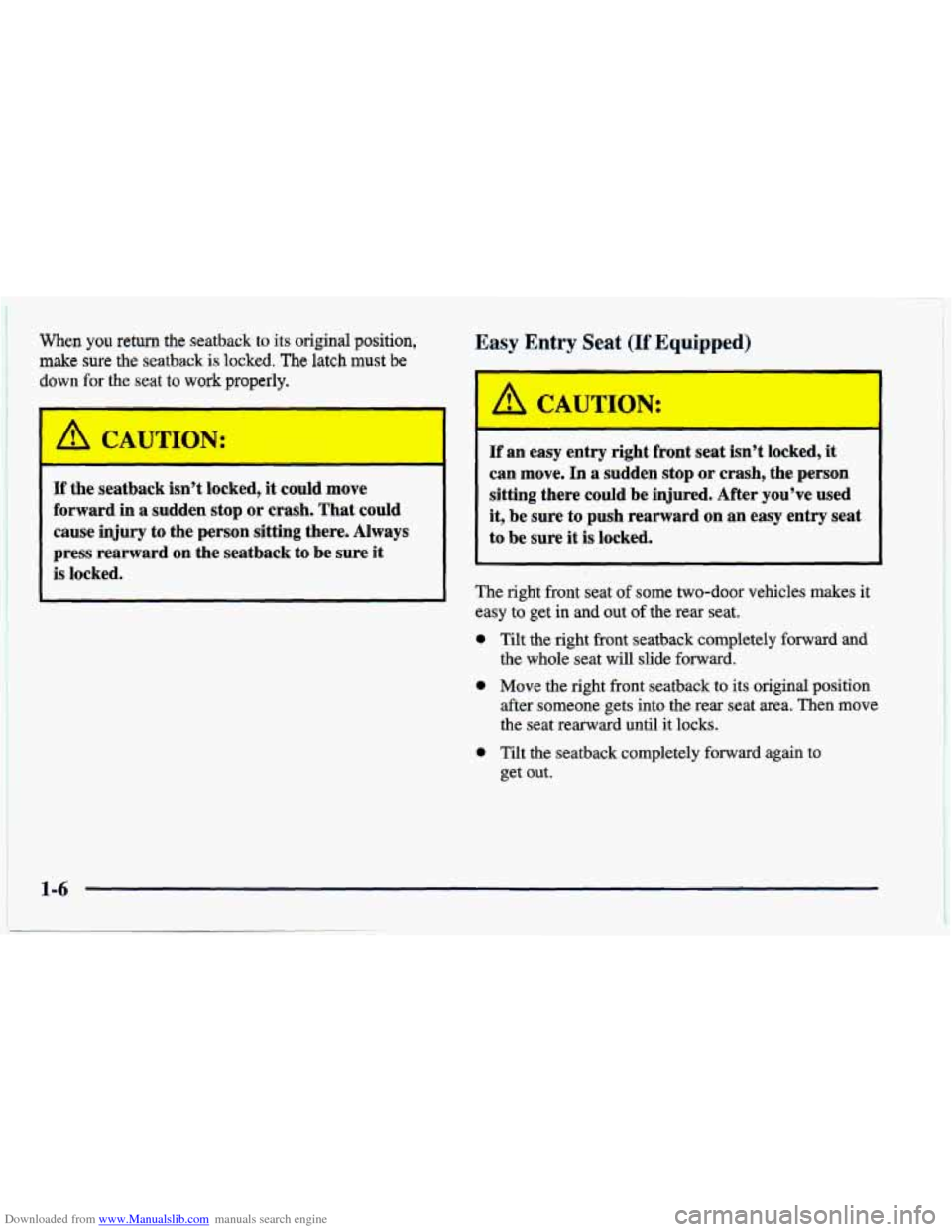
Downloaded from www.Manualslib.com manuals search engine When you return the seatback to its original position,
make sure the seatb,ack is locked. The latch must be
down for the seat to work properly.
If the seatback isn’t locked, it could move
forward in a sudden stop or crash. That could
cause injury to the person sitting there. Always
press rearward on the seatback to be sure it
is locked.
Easy Entry Seat (If Equipped)
‘ A CAUTION:
+
If an easy entry right front seat isn’t locked, it
can move. In a sudden stop or crash, the person
sitting there could be injured. After you’ve used
it, be sure to push rearward on an easy entry seat
to be sure it is locked.
The right front seat of some two-door vehicles makes it
easy to get in and out of the rear seat.
0 Tilt the right front seatback completely forward and
the whole seat will slide forward.
0 Move the right front seatback to its original position
after someone gets into the rear seat area. Then move
the seat rearward until it locks.
0 Tilt the seatback completely forward again to
get out.
1-6
Page 25 of 400
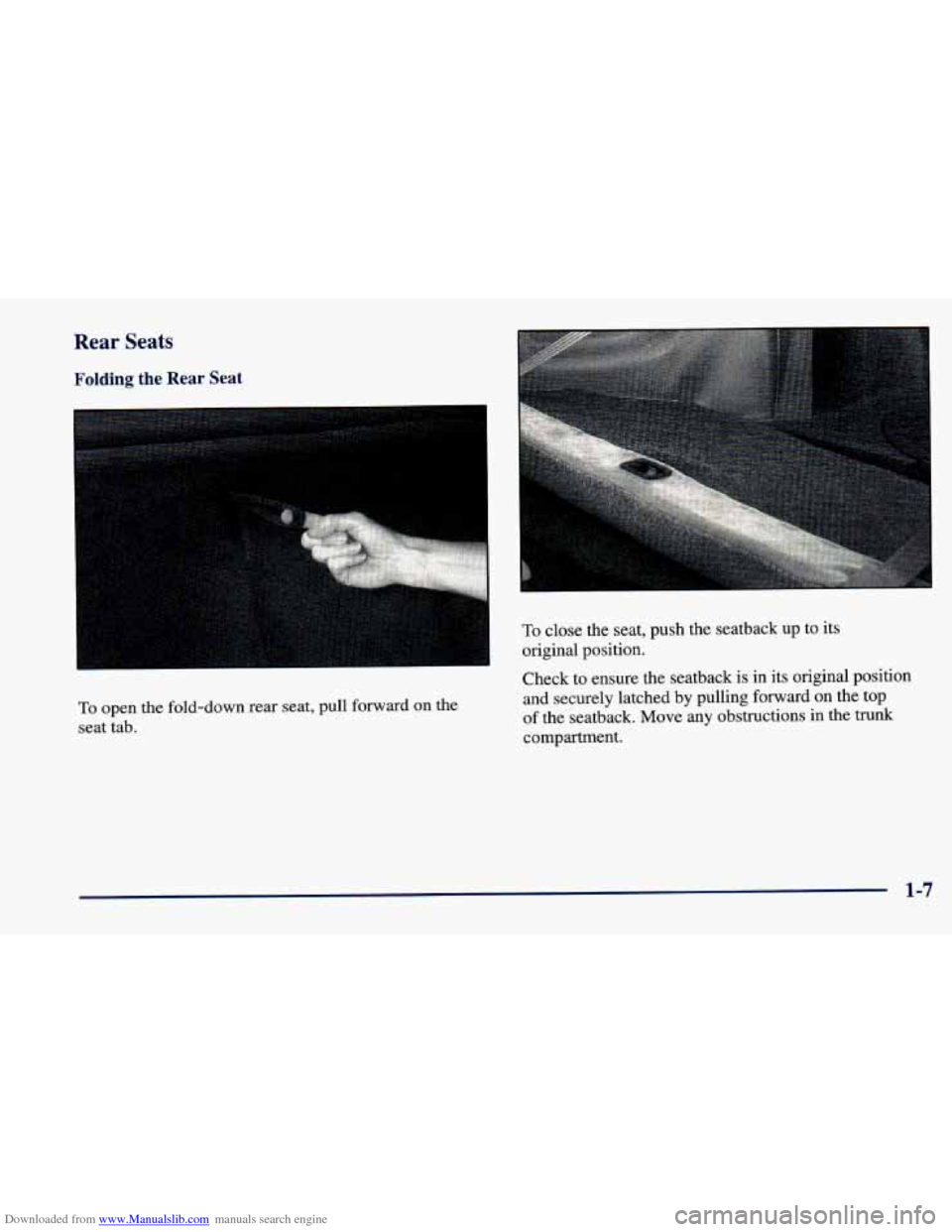
Downloaded from www.Manualslib.com manuals search engine Rear Seats
Folding the Rear Seat
I
To open the fold-down rear seat, pull forward on the
seat tab.
To close the seat, push the seatback up to its
original position.
Check to ensure the seatback is in its original position and securely latched by pulling forward
on the top
of the seatback. Move any obstructions in the trunk
compartment.
1-7
Page 26 of 400
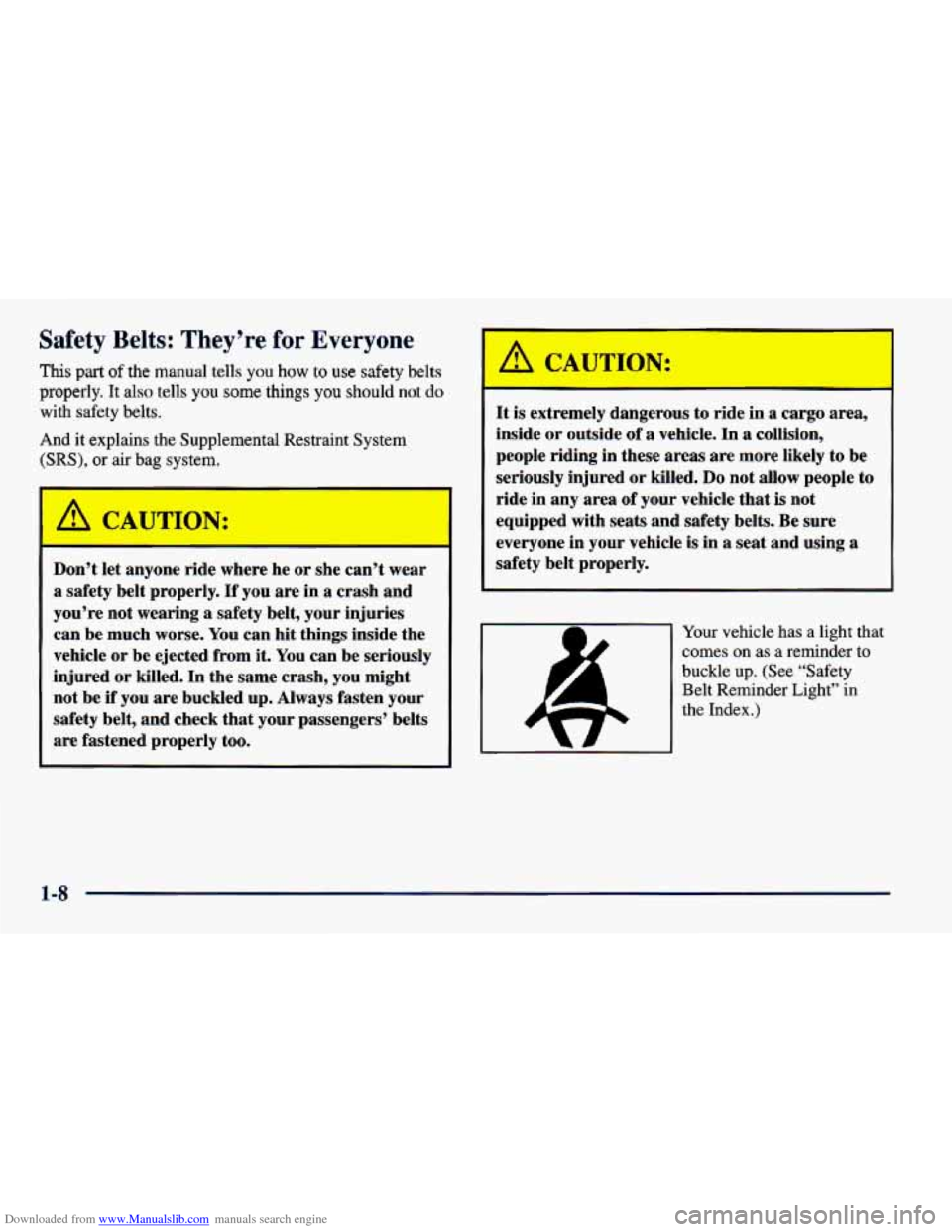
Downloaded from www.Manualslib.com manuals search engine Safety Belts: They’re for Everyone
This part of the manual tells you how to use safety belts
properly. It also tells you some things you should not do
with safety belts.
And
it explains the Supplemental Restraint System
(SRS), or air bag system.
A CAUTION:
- --
Don’t let anyone ride where he or she can’t wear
a safety belt properly. If you are in a crash and
you’re not wearing
a safety belt, your injuries
can be much worse. You can hit things inside the
vehicle or be ejected from it. You can be seriously
injured or killed. In the same crash, you might
not be
if you are buckled up. Always fasten your
safety belt, and check that your passengers’ belts
are fastened properly
too.
r:ezrz:us to ride in a cargo area,
~ inside or outside of a vehicle. In a collision,
~ people riding in these areas are more likely to be
seriously injured or killed.
Do not allow people to
ride in any area of your vehicle that
is not
equipped with seats and safety belts. Be sure
everyone in your vehicle is in
a seat and using a
safety belt properly.
-- - -- -
Your vehicle has a light that
comes on as a reminder to
buckle
up. (See “Safety
Belt Reminder Light” in
the Index
.)
1-8
Page 27 of 400

Downloaded from www.Manualslib.com manuals search engine In most states and Canadian provinces, the law says to
wear safety belts. Here’s why:
They work.
You never know if you’ll be in a crash, If you do have a
crash,
you don’t know if it will be a bad one.
A few crashes are mild, and some crashes can be so
serious that even buckled up a person wouldn’t survive.
But most crashes are in between.
In many of them,
people who buckle up can survive and sometimes
walk away. Without belts they could have been badly
hurt or killed.
After more than
30 years of safety belts in vehicles,
the facts are clear. In most crashes buckling
up does
matter
... a lot!
Why Safety Belts Work
When you ride in or on anything, you go as fast as
it goes.
Take the simplest vehicle. Suppose it’s just
a seat
on wheels.
1-9
Page 28 of 400
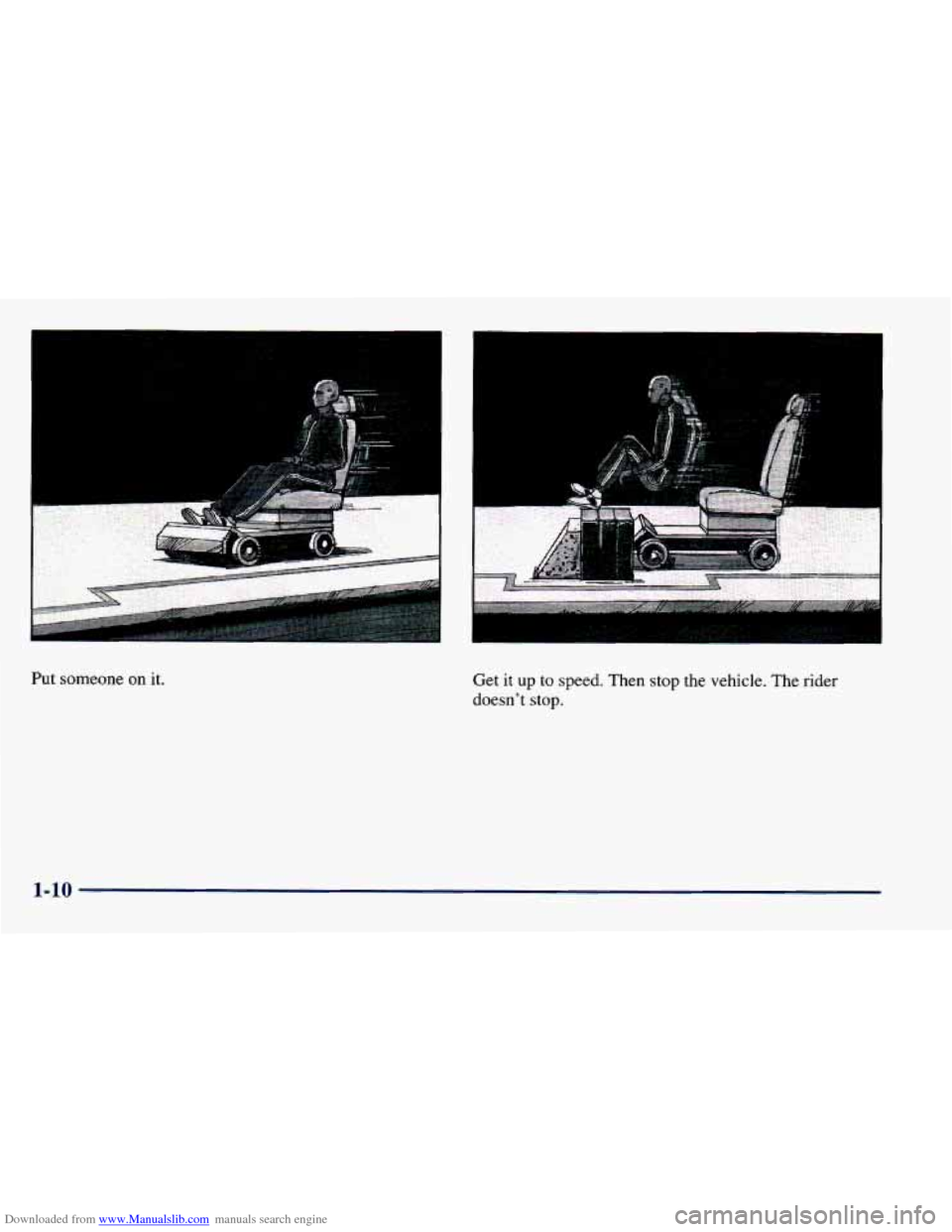
Downloaded from www.Manualslib.com manuals search engine Get it up to speed. Then stop the vehicle. The rider
doesn’t stop.
1-10
Page 29 of 400
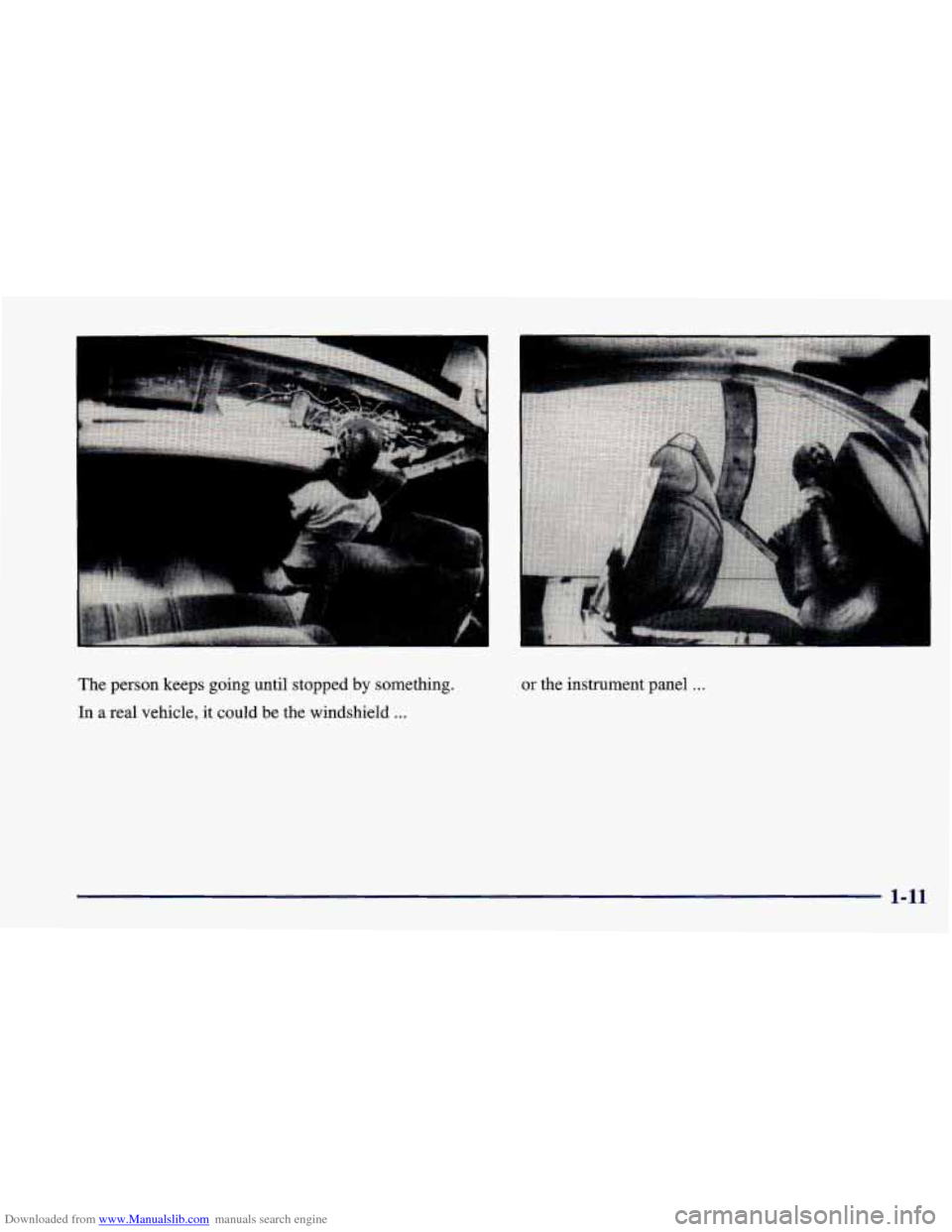
Downloaded from www.Manualslib.com manuals search engine The person keeps going until stopped by something.
In a real vehicle, it could be the windshield
...
or the instrument panel ...
1-11
Page 30 of 400
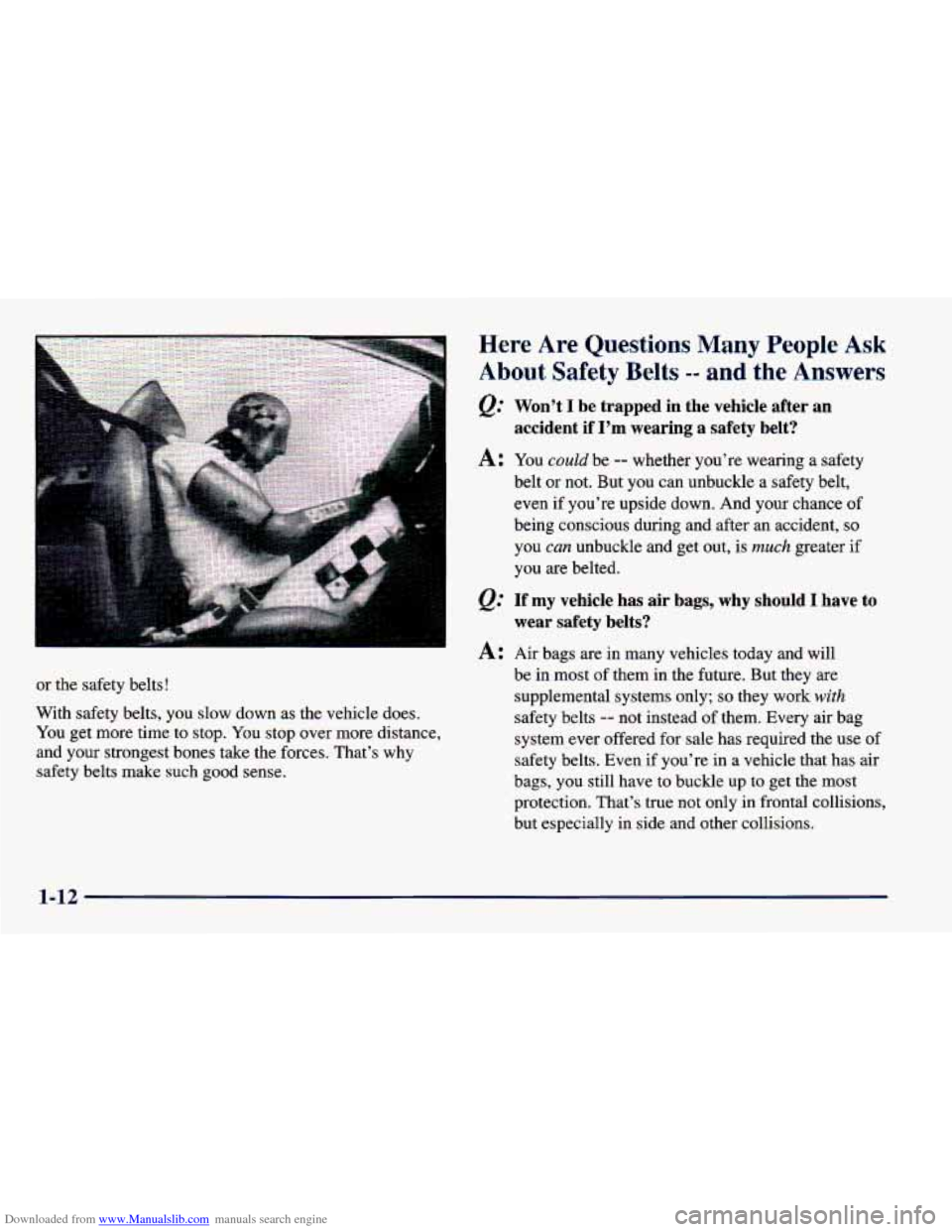
Downloaded from www.Manualslib.com manuals search engine or the safety belts!
With safety belts, you slow down
as the vehicle does.
You get more time to stop. You stop over more distance,
and your strongest bones take the forces. That’s why
safety belts make
such good sense.
Here Are Questions Many People Ask
About Safety Belts -- and the Answers
@ Won’t I be trapped in the vehicle after an
accident if I’m wearing a safety belt?
A: You could be -- whether you’re wearing a safety
belt or not. But you can unbuckle a safety belt,
even
if you’re upside down. And your chance of
being conscious during and after an accident, so
you can unbuckle and get out, is much greater if
you are belted.
@ If my vehicle has air bags, why should I have to
wear safety belts?
A: Air bags are in many vehicles today and will
be in most of them in the future. But they are
supplemental systems only;
so they work with
safety belts -- not instead of them. Every air bag
system ever offered for sale has required the use
of
safety belts. Even if you’re in a vehicle that has air
bags, you still have to buckle up to get the most
protection. That’s true not only in frontal collisions,
but especially in side and other collisions.
1-12